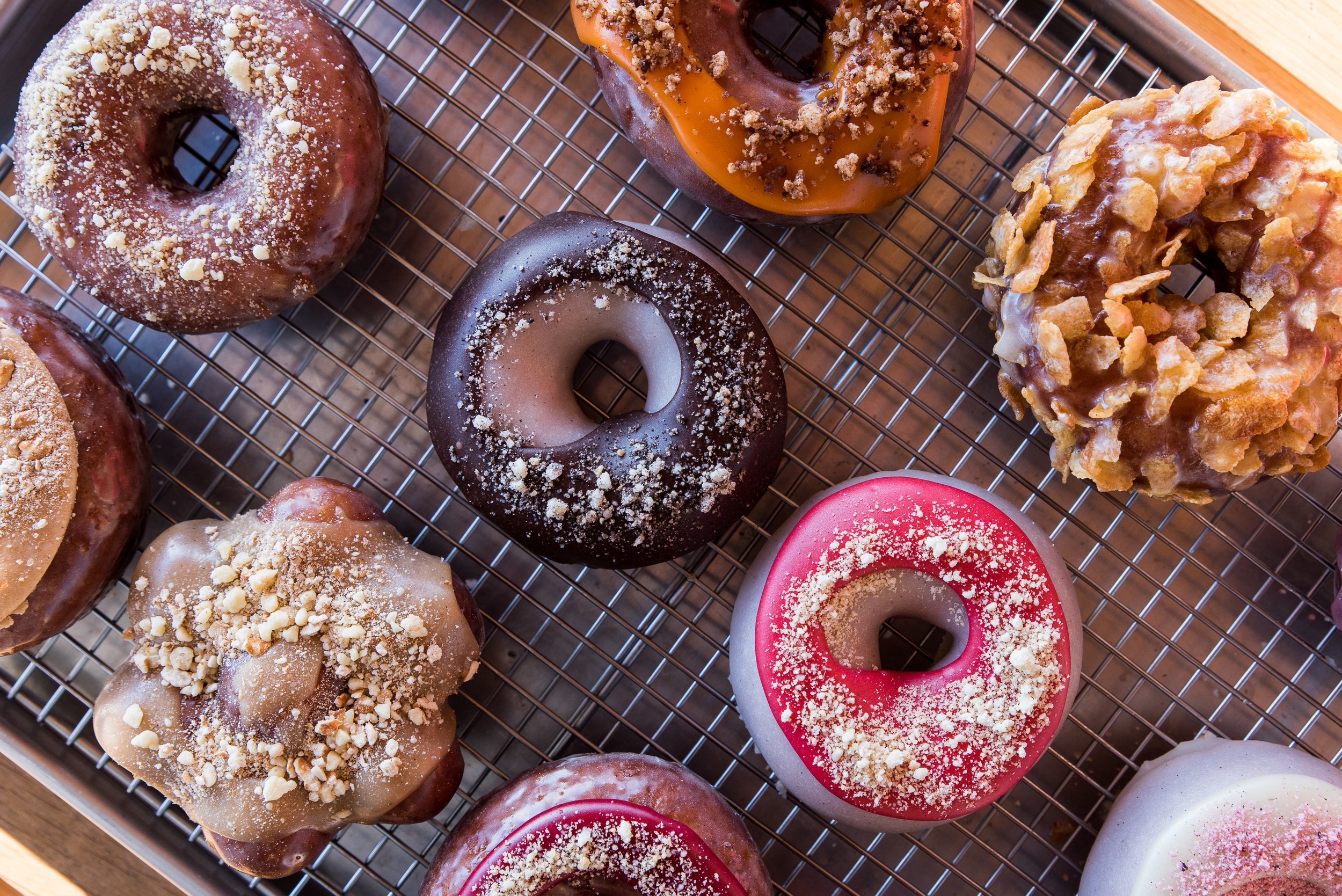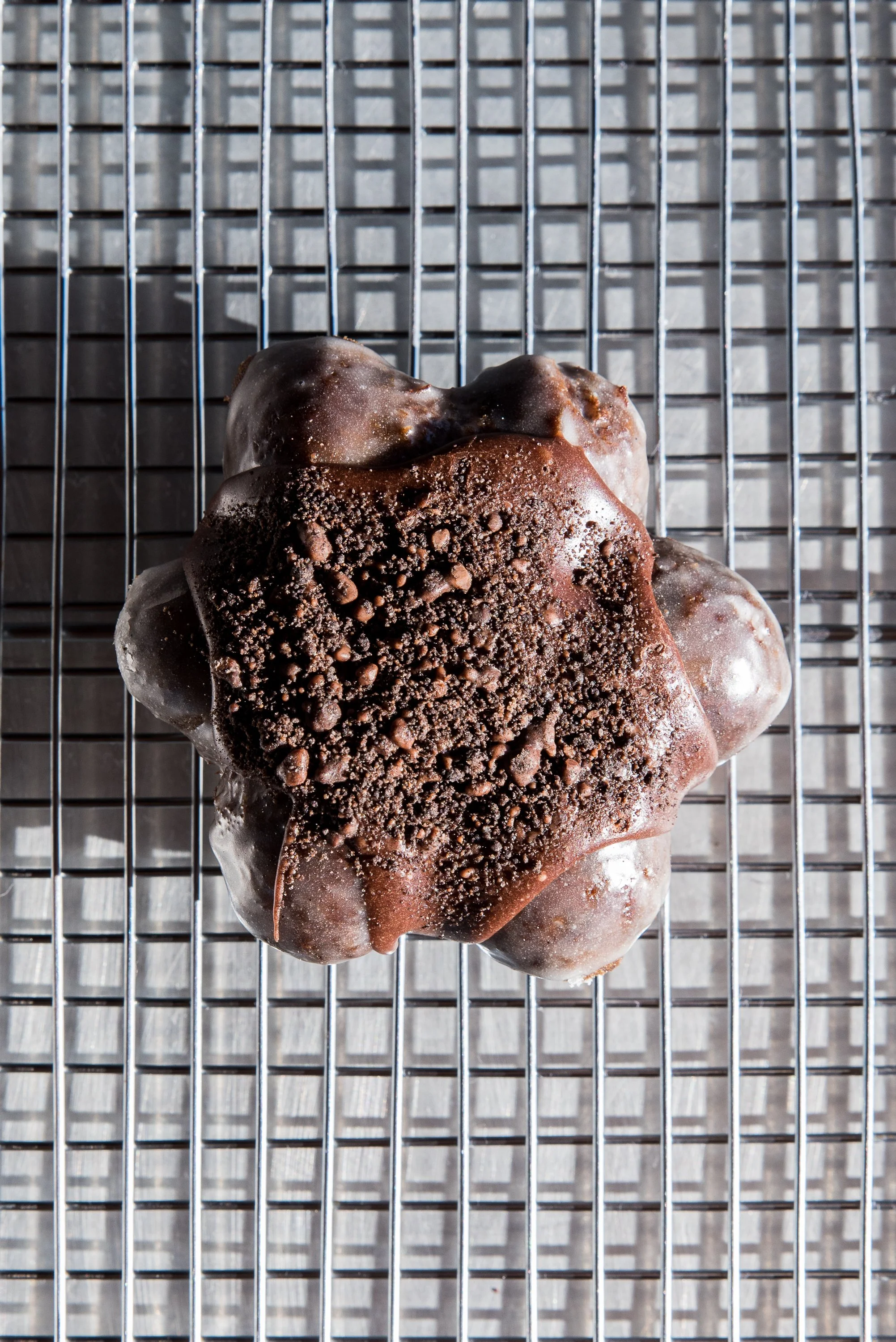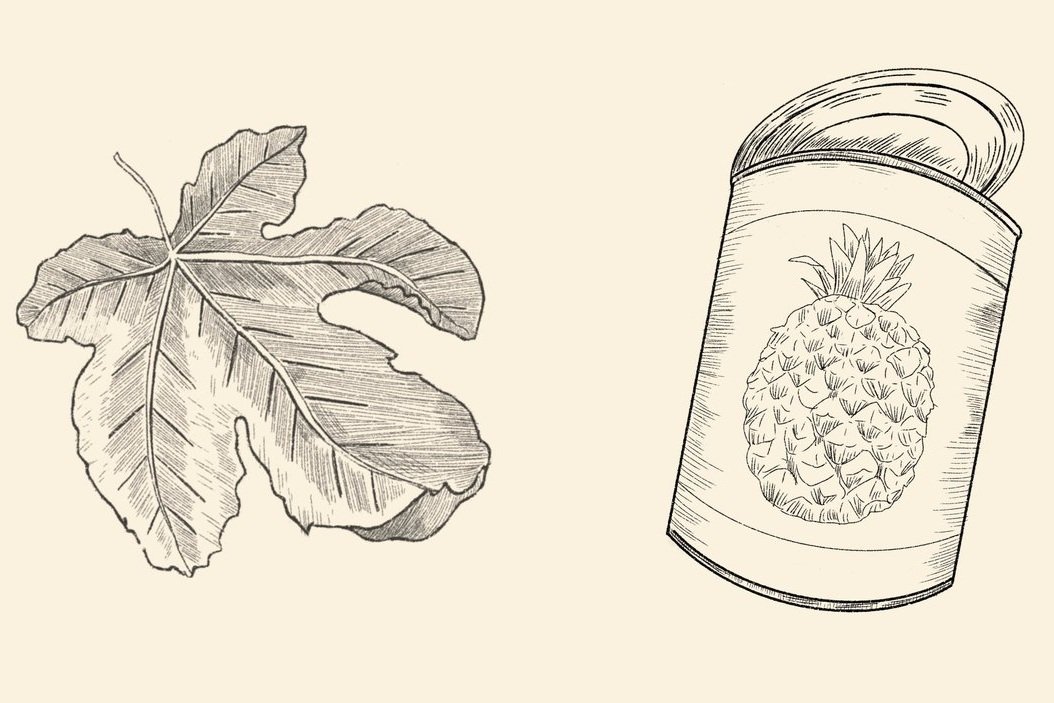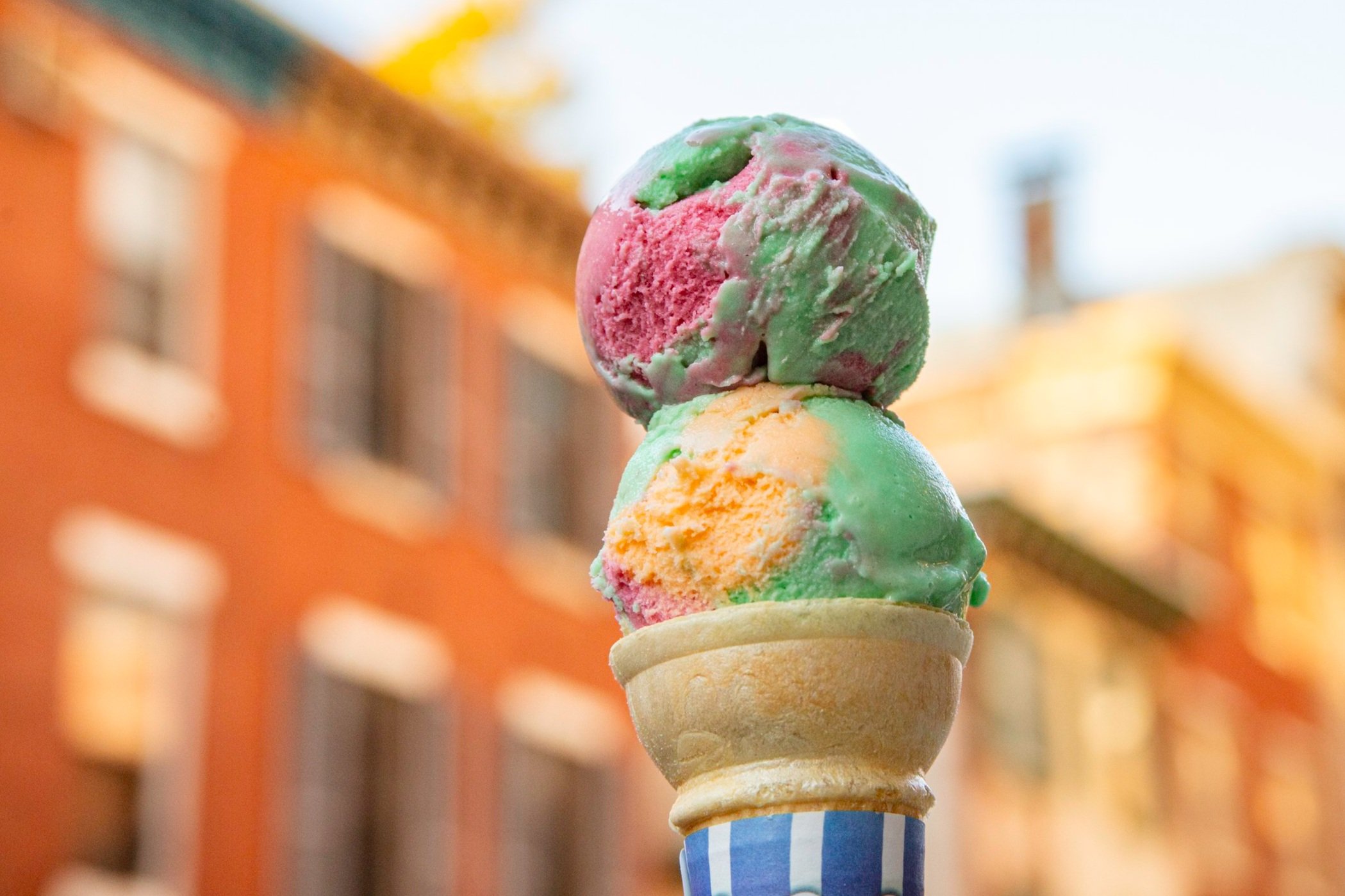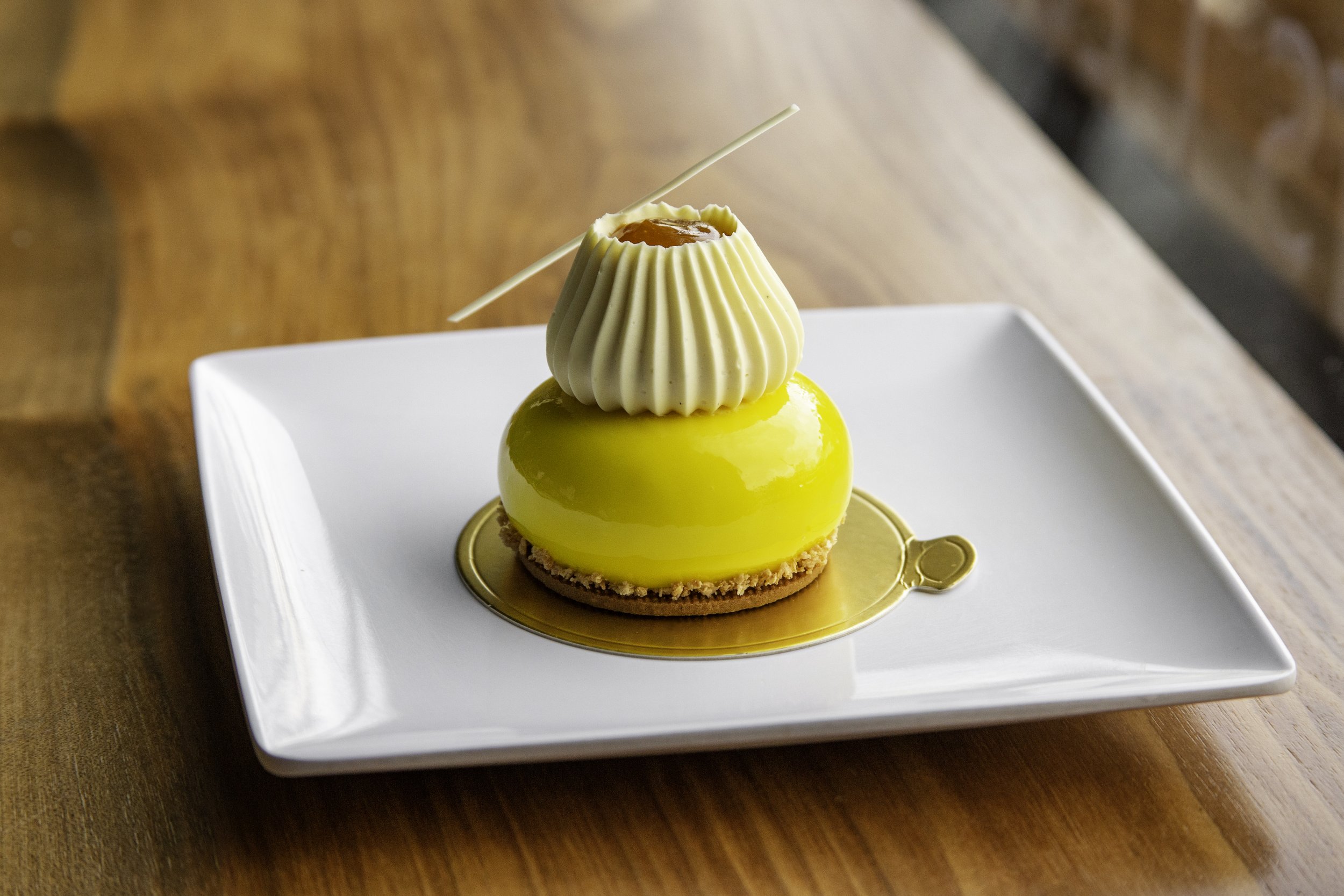The Dos and Doughs of Curiosity
This is how Alex Talbot is innovating the doughnut.
Photos: Jaclyn Warren
It was August 2015. Planning a move to Pennsylvania, Alex Talbot of Ideas in Food was walking through a farmers market in Stockton, New Jersey when he spotted an ice cream machine for sale. He reached out to the market manager and asked about starting a frozen custard stand. When the manager countered that selling ice cream didn’t turn enough of a profit for the machine’s previous operator, Talbot blurted out that he’d also be selling doughnuts.
It was settled. Talbot was in—Stockton, custard, the machine, fried dough, and all. The trouble was he still lived five hours away in New Hampshire, didn’t have a doughnut menu planned, and agreed to start selling in one month. For the next seven months, he commuted from New Hampshire to Stockton. And all for a doughnut. “I thought by committing to a business in New Jersey that karma would help immediately sell the house in New Hampshire.”
Four years later, Talbot sells Curiosity Doughnuts from two Whole Foods locations—four days a week in Spring House, Pennsylvania, and once a week in Princeton, New Jersey.
Curiosity has as a extensive daily roster of doughnuts (38 on the Saturday we visited). Rather than simply use a single dough with many glazes, Talbot’s prepares seven doughs, including Curiosity’s original doughnut (based on a recipe from Talbot and Aki Kamozawa’s book Maximum Flavor), a chocolate yeasted dough, an apple cider “new fashioned” dough made with Japanese starch paste, an egg- and dairy-free dough, a cruller dough, a no-knead danish-inspired dough, and what he calls a “Super Cake” dough made by combining a bit of choux with standard cake dough for “the most ethereal, cloudlike doughnut ever.” He’s also “tinkering” with a potato-based dough, bringing his dough prep menu up to eight.
Triple Chocolate: Chocolate Yeasted Doughnut, Chocolate Glaze, and Chocolate Crumb
Tiger Crunch: Vanilla Yeasted Doughnut, Corn Flakes, and Buttermilk Vanilla GlazE
Blackberry-glazed Vanilla Yeasted Doughnut with Vanilla Cookie Crumb
He has also achieved a low- to no-waste operation by using scraps. Talbot layers the trim from yeasted vanilla and chocolate doughs, then rolls the two together to create a marbled effect. He takes doughnut holes—which he calls a “nickel-and-dime business” and “a pain to fry and sell”—and fuses seven into a starburst (aka cluster or flower), turning them into “a viable doughnut.” Talbot chops and roasts unsold doughnuts, grinds them to crumbs, and tosses the crumbs with spices as a garnish for the next day’s batch. He turns other unsold doughnuts into bread pudding. Baked in doughnut tins, they have the same shape as the rest of the inventory and can be eaten by hand.
“My world is constantly asking questions and innovating and exploring and failing miserably,” says Talbot. Luckily for his customers, some of those “failures” turn the corner and make their way to the fryer. And get iced with cookie butter. Or glazed with blood orange. Or crusted with corn flakes. Or flavored like a cinnamon bun. And every one is a revelation.

